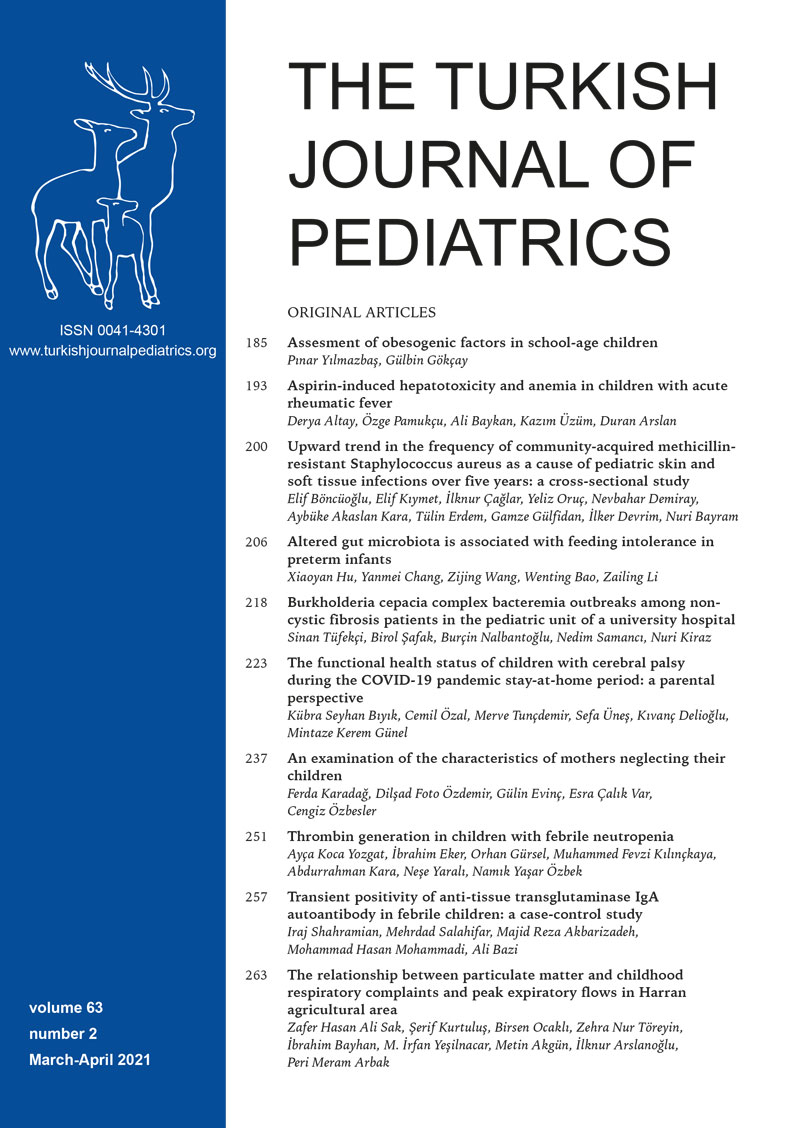Abstract
Background. The main aim of the study was to assess the association between joint hypermobility (JH) and gastrointestinal (GI) disorders in children.
Methods. All children aged 4-17 years attending the clinics of the participating Pediatric Gastroenterology Centres for functional GI disorders (FGIDs) and inflammatory bowel disease (IBD) were screened for joint laxity. JH diagnosis was inferred using the Beighton Score. JHS diagnosis was inferred based on the Brighton Criteria. Rome III Diagnostic Criteria were used to diagnose possible FGIDs. Ulcerative colitis and Crohn`s disease diagnoses were made according to the Porto Criteria. Age and sex- matched healthy children were enrolled as controls.
Results. One-hundred-seventy children with GI disorders (70 with FGIDs, 50 with Crohn`s disease, and 50 with ulcerative colitis) and 100 healthy controls were enrolled in the study. JH was reported in 7/70 (10%) children with FGIDs (p=0.26 compared to controls), 4/50 (8%) children with Crohn`s disease (p=0.21 compared to controls) and 15/50 (30%) children with ulcerative colitis (p=0.09 compared to controls; p=0.01 compared to FGIDs; p=0.01 compared to Crohn`s).
Conclusions. JH is more prevalent in patients suffering from ulcerative colitis compared to the healthy general population, yet the difference did not reach statistical significance. Likely, a proportion of children with ulcerative colitis and JH may show connective tissue abnormalities. However, whether JH can be considered a possible feature of pediatric GI disorders deserves further investigation.
Keywords: children, inflammatory bowel disease, joint hypermobility, joint hypermobility syndrome, ulcerative colitis
Copyright and license
Copyright © 2021 The Author(s). This is an open access article distributed under the Creative Commons Attribution License (CC BY), which permits unrestricted use, distribution, and reproduction in any medium or format, provided the original work is properly cited.














